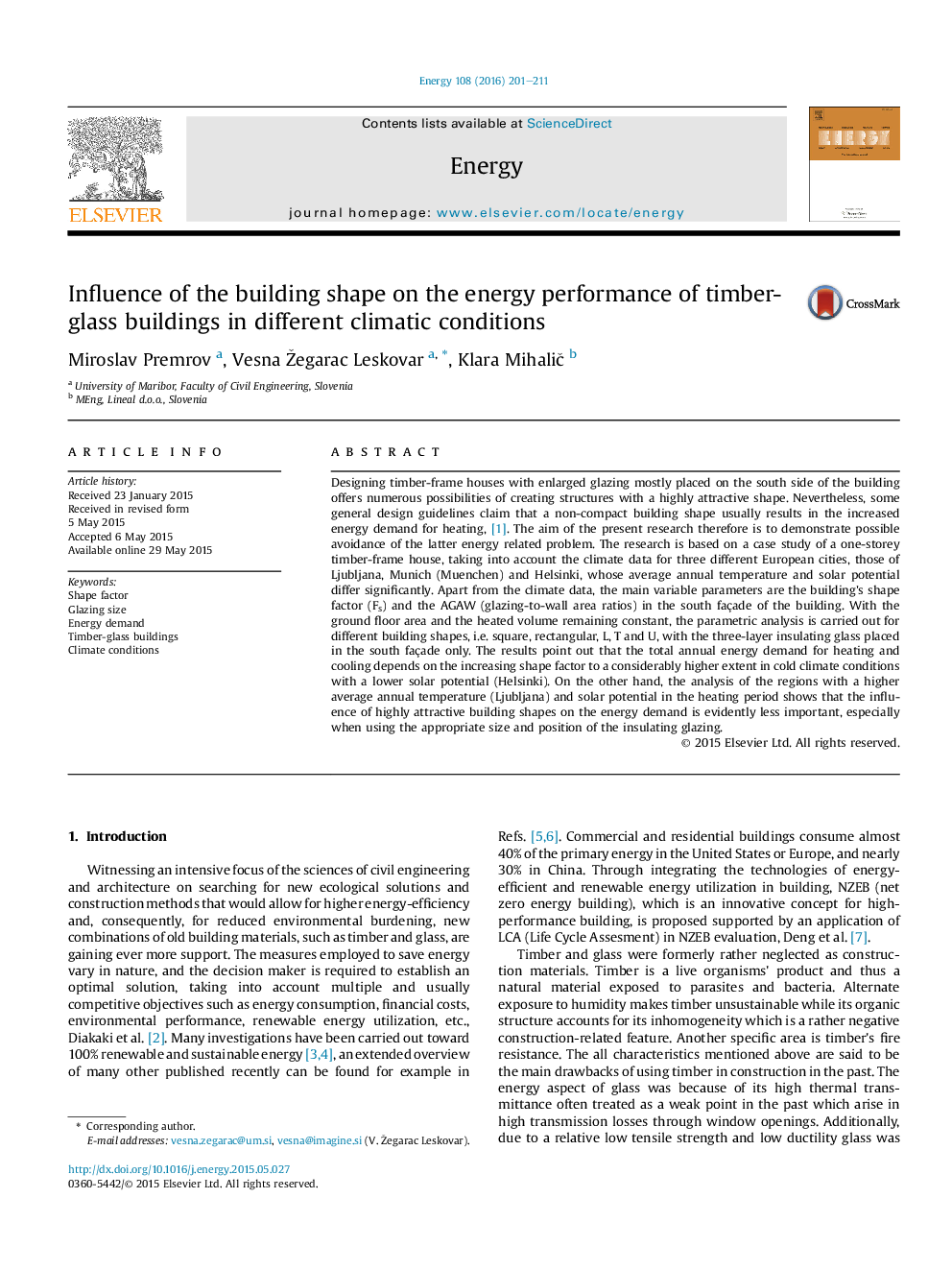| کد مقاله | کد نشریه | سال انتشار | مقاله انگلیسی | نسخه تمام متن |
|---|---|---|---|---|
| 1730915 | 1521440 | 2016 | 11 صفحه PDF | دانلود رایگان |
• Design guidelines for low-energy timber buildings related to shape factor (Fs).
• Study considers different climatic conditions.
• Determination of relation between climate data, Fs and glazing-to-wall area ratios.
• Fs influence on energy demand is higher in cold climates with lower solar potential.
Designing timber-frame houses with enlarged glazing mostly placed on the south side of the building offers numerous possibilities of creating structures with a highly attractive shape. Nevertheless, some general design guidelines claim that a non-compact building shape usually results in the increased energy demand for heating, [1]. The aim of the present research therefore is to demonstrate possible avoidance of the latter energy related problem. The research is based on a case study of a one-storey timber-frame house, taking into account the climate data for three different European cities, those of Ljubljana, Munich (Muenchen) and Helsinki, whose average annual temperature and solar potential differ significantly. Apart from the climate data, the main variable parameters are the building's shape factor (Fs) and the AGAW (glazing-to-wall area ratios) in the south façade of the building. With the ground floor area and the heated volume remaining constant, the parametric analysis is carried out for different building shapes, i.e. square, rectangular, L, T and U, with the three-layer insulating glass placed in the south façade only. The results point out that the total annual energy demand for heating and cooling depends on the increasing shape factor to a considerably higher extent in cold climate conditions with a lower solar potential (Helsinki). On the other hand, the analysis of the regions with a higher average annual temperature (Ljubljana) and solar potential in the heating period shows that the influence of highly attractive building shapes on the energy demand is evidently less important, especially when using the appropriate size and position of the insulating glazing.
Journal: Energy - Volume 108, 1 August 2016, Pages 201–211
